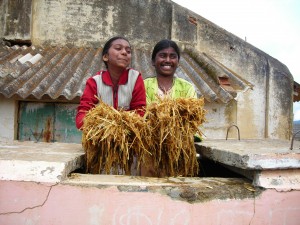Inspiring Eco-Clubs in South India

Originally appears in the Summer 2010 issue
The Nilgiris hill district has been described as the lungs of South India, due to its rich biodiversity and dense shola (stunted evergreen) forests. The densely-populated district is part of the Nilgiris Biosphere Reserve and is the main source of water for the rivers of south India. Its temperate climate favours year round cultivation. Over time, tea and coffee plantations have become the dominant crops while in the remaining 25% of agricultural land, very small farms grow vegetables, spices and condiments.
In a nationwide effort to boost food production in the 1960’s and 1970’s, the Green Revolution introduced chemical agriculture to the Nilgiris. Increasing and indiscriminate use of chemical fertilizers and pesticides reduced soil fertility, leaving degraded agricultural land in its wake. Instead of growing a wide range of crops that in turn supported a varied diet, the Green Revolution encouraged fewer, monoculture crops. In this very poor region, these changes led to a more limited local diet.
With agriculture still in decline, young people continue to leave the land for the cities, and local schools face declining enrolment. For the young people that remain in the Nilgiris area, poverty, a lack of skills and low confidence hold many back.
This content is restricted to subscribers only.
If you are not yet a subscriber, please consider taking out a subscription here.
If you are an existing subscriber, kindly log in or contact us at info@greenteacher.com for more information.





